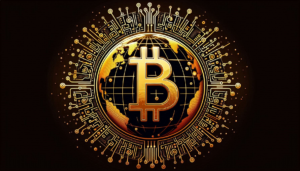Are the Lines Between TradFi and Crypto Blurring?
Are the Lines Between TradFi and Crypto Blurring?
As the financial landscape evolves, the distinction between traditional finance (TradFi) and cryptocurrency is becoming increasingly ambiguous. This transformation is largely driven by technological advancements, regulatory developments, and a growing acceptance of digital assets among mainstream investors.
Technological Convergence
The integration of blockchain technology into traditional financial systems is a key factor in this blurring of lines. Many traditional financial institutions are exploring how blockchain can enhance efficiency, transparency, and security. For instance, banks are utilizing distributed ledger technology for faster settlement times and reduced operational costs. Additionally, the rise of decentralized finance (DeFi) platforms offers alternatives to conventional banking products, enabling users to borrow, lend, and earn interest without intermediaries.
Regulatory Developments
Regulatory bodies are also playing a significant role in shaping the future of both TradFi and crypto. As governments worldwide begin to recognize the importance of digital currencies, many are establishing frameworks to regulate the space. This includes the introduction of regulations for stablecoins, initial coin offerings (ICOs), and cryptocurrency exchanges. By creating a more structured environment, regulators aim to protect consumers while fostering innovation, which could further integrate crypto into mainstream finance.
Institutional Adoption
Institutional interest in cryptocurrencies has surged in recent years, as hedge funds, endowments, and publicly-traded companies allocate a portion of their portfolios to digital assets. This shift has contributed to the legitimacy of cryptocurrencies, attracting a broader audience of investors. Major financial players such as Goldman Sachs and Fidelity have begun offering crypto-related services, further solidifying the connection between TradFi and digital assets.
Consumer Behavior and Acceptance
The increasing acceptance of cryptocurrencies among consumers is another significant factor in the merging of these two worlds. More individuals now use digital currencies for transactions, investment, and remittances. Payment processors like PayPal and Square have begun integrating cryptocurrencies into their platforms, making it easier for everyday users to engage with digital assets. As a result, the growing familiarity with crypto is encouraging a shift in perception, viewing it as a viable alternative to traditional currencies.
The Future Outlook
Looking ahead, the line between TradFi and crypto is expected to become even more indistinct. As more traditional financial institutions adopt blockchain technology and cryptocurrencies, the two sectors may eventually converge into a unified financial ecosystem. This evolution presents both opportunities and challenges, including the need for robust regulatory frameworks and the potential for increased competition between traditional banks and digital asset platforms.
In conclusion, the merging of TradFi and crypto signifies a pivotal moment in the financial landscape. As these two worlds continue to interact, the future of finance will likely be characterized by increased innovation, greater accessibility, and a more interconnected global economy. The ongoing developments in this space will be crucial to watch, as they will undoubtedly shape the financial landscape for years to come.
